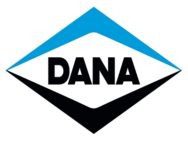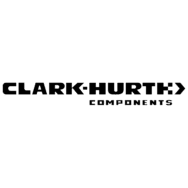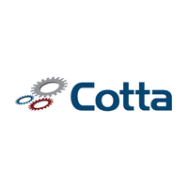Understanding Torque Converter Failures in Industrial Applications
Torque converters are critical components in many industrial power transmission systems, enabling the smooth transfer of power from engines to transmissions. At K&L Clutch, we’ve seen firsthand how torque converter failures can lead to costly downtime and repairs. Understanding the common causes of these failures can help you implement preventative maintenance strategies to extend the life of your equipment.
7 Common Causes of Torque Converter Failure
1. Overheating
Excessive heat is perhaps the most common culprit behind torque converter failures. Industrial torque converters operate under significant stress, and when transmission fluid overheats, it breaks down and loses its lubricating properties. This can lead to:
- Damaged seals and gaskets
- Warped metal components
- Premature wear on internal components
- Transmission fluid degradation
Temperature issues often begin with insufficient cooling or operating equipment beyond recommended duty cycles. In heavy-duty industrial applications, maintaining proper cooling systems is essential.
2. Contaminated Transmission Fluid
The quality and cleanliness of transmission fluid directly impact torque converter performance and longevity. Contaminated fluid can contain:
- Metal shavings from worn components
- Dirt and debris
- Sludge from fluid breakdown
- Water intrusion
These contaminants act as abrasives that accelerate wear on precision components like stators, turbines, and pumps. Regular fluid analysis and scheduled replacements are crucial preventative measures.
3. Lockup Clutch Failure
Many modern industrial torque converters feature lockup clutches that engage to provide direct mechanical connection during steady-state operation. These clutches can fail due to:
- Friction material wear
- Damaged springs or pistons
- Control valve issues
- Electrical solenoid failures
When a lockup clutch fails, it often manifests as shuddering, slipping, or complete loss of power transfer efficiency.
4. Bearing Wear or Failure
Bearings support the rotating components within the torque converter, allowing for smooth operation under high loads. Bearing problems typically develop from:
- Inadequate lubrication
- Misalignment
- Manufacturing defects
- Excessive operating pressures
Failed bearings can lead to catastrophic damage as they allow excessive movement of components designed to operate with precise clearances.
5. Seal and Gasket Deterioration
The internal seals and gaskets in torque converters prevent fluid leaks and maintain proper pressure. These components deteriorate over time due to:
- Heat cycles
- Chemical breakdown from fluid exposure
- Physical stress
- Age-related hardening
Leaking fluid not only reduces performance but can lead to more serious failures if internal components run dry.
6. Pump Failure
The pump component of a torque converter creates the hydraulic pressure necessary for operation. Pump failures can result from:
- Cavitation due to air in the system
- Worn pump vanes or impellers
- Excessive clearance from component wear
- Material fatigue
When pump efficiency decreases, pressure drops throughout the system, leading to slipping and eventual system failure.
7. Improper Application or Specification
Sometimes torque converter failures stem from using components that aren’t properly matched to the application’s demands. Issues include:
- Undersized converters for the power requirements
- Incompatible stall speeds for the application
- Incorrect diameter or coupling specifications
- Inadequate cooling provisions for duty cycle
Warning Signs of Impending Torque Converter Failure
Recognizing early warning signs can help prevent catastrophic failures:
- Unusual noises (whining, grinding, or rattling)
- Shuddering or vibration during operation
- Slipping or delayed power transfer
- Overheating transmission
- Metal particles in transmission fluid
- Reduced efficiency or power
- Illuminated warning lights on electronic systems
Preventative Maintenance to Extend Torque Converter Life
Implementing a robust maintenance program can significantly extend the service life of industrial torque converters:
- Regular Fluid Analysis and Changes: Monitor fluid condition and replace according to manufacturer specifications rather than just time intervals.
- Temperature Monitoring: Install temperature sensors to detect overheating conditions before damage occurs.
- Proper Cooling: Ensure cooling systems are adequately sized for your application and regularly maintained.
- Filtration Systems: Use high-quality filtration to remove contaminants before they cause damage.
- Operator Training: Ensure equipment operators understand proper startup, operation, and shutdown procedures.
- Vibration Analysis: Implement regular vibration monitoring to detect issues before they lead to failures.
- Load Management: Avoid operating equipment beyond its rated capacity for extended periods.
When to Consider Rebuilding or Replacement
Even with excellent maintenance, torque converters eventually require rebuilding or replacement. Consider these services when:
- Efficiency has noticeably decreased
- Internal components show significant wear during inspection
- The converter has been in service beyond its recommended service life
- Operating conditions have changed significantly
- Repeated minor issues suggest deeper problems
Trust K&L Clutch for Your Torque Converter Needs
At K&L Clutch, we specialize in industrial clutch and torque converter solutions for demanding applications. Our experienced team provides expert diagnosis, quality rebuilds, and precision-engineered replacements to keep your equipment running at peak efficiency.
Whether you’re experiencing issues with your current torque converter or looking to implement a preventative maintenance program, our specialists can help you maximize uptime and extend component life.
Contact us today to learn more about our industrial torque converter services and how we can support your operation’s reliability and performance goals.

























